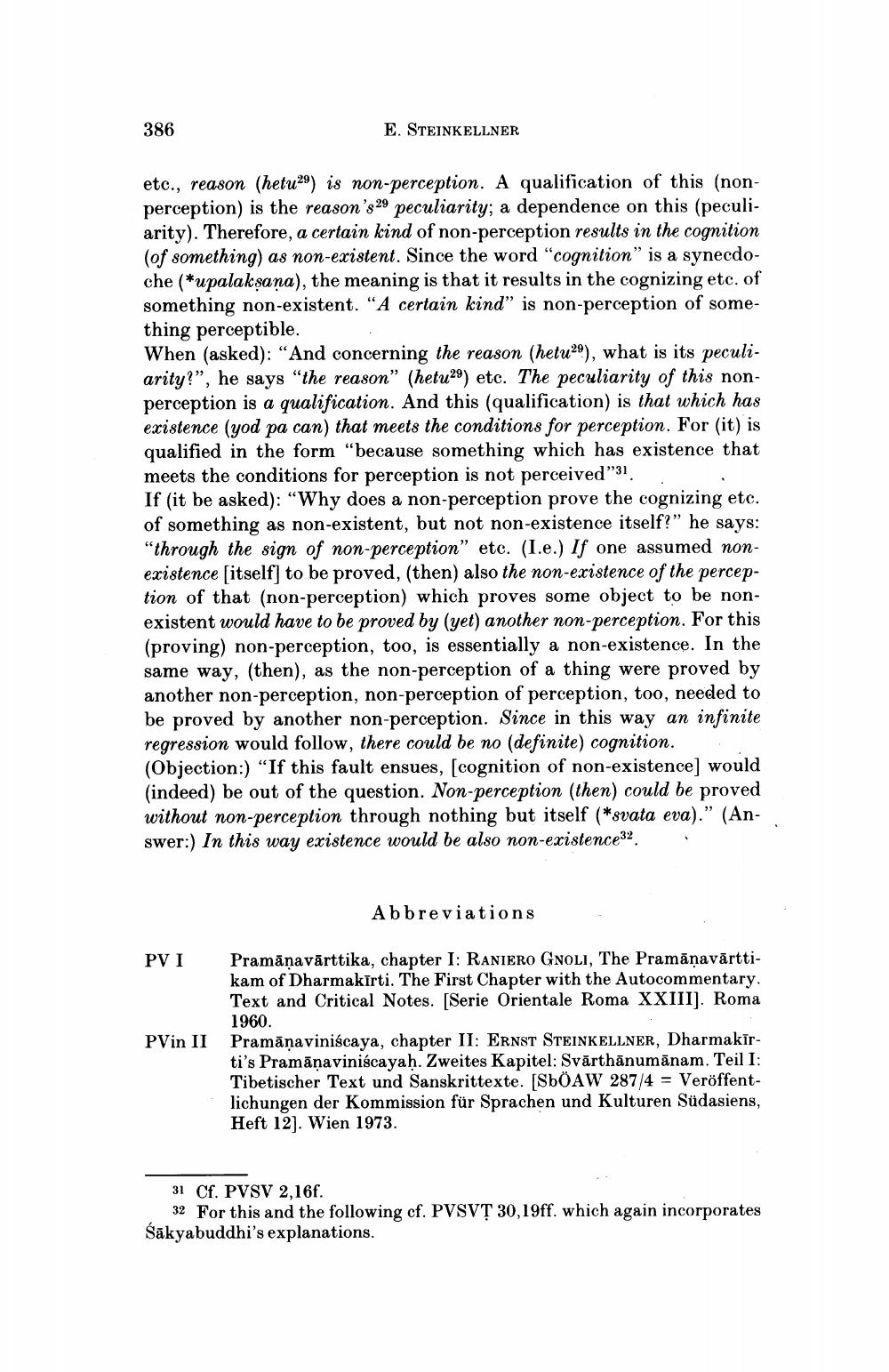Book Title: Sakyabuddhis Commentary On Pramanavarttika I 3 And Its Vrtti Author(s): Ernat Steinkellner Publisher: Ernat Steinkellner View full book textPage 8
________________ 386 etc., reason (hetu29) is non-perception. A qualification of this (nonperception) is the reason's 29 peculiarity; a dependence on this (peculiarity). Therefore, a certain kind of non-perception results in the cognition (of something) as non-existent. Since the word "cognition" is a synecdoche (*upalakṣana), the meaning is that it results in the cognizing etc. of something non-existent. "A certain kind" is non-perception of something perceptible. When (asked): "And concerning the reason (hetu29), what is its peculiarity?", he says "the reason" (hetu29) etc. The peculiarity of this nonperception is a qualification. And this (qualification) is that which has existence (yod pa can) that meets the conditions for perception. For (it) is qualified in the form "because something which has existence that meets the conditions for perception is not perceived"31. E. STEINKELLNER If (it be asked): "Why does a non-perception prove the cognizing etc. of something as non-existent, but not non-existence itself?" he says: "through the sign of non-perception" etc. (I.e.) If one assumed nonexistence [itself] to be proved, (then) also the non-existence of the perception of that (non-perception) which proves some object to be nonexistent would have to be proved by (yet) another non-perception. For this (proving) non-perception, too, is essentially a non-existence. In the same way, (then), as the non-perception of a thing were proved by another non-perception, non-perception of perception, too, needed to be proved by another non-perception. Since in this way an infinite regression would follow, there could be no (definite) cognition. (Objection:) "If this fault ensues, [cognition of non-existence] would (indeed) be out of the question. Non-perception (then) could be proved without non-perception through nothing but itself (*svata eva)." (Answer:) In this way existence would be also non-existence 32. PV I PVin II Abbreviations Pramāṇavārttika, chapter I: RANIERO GNOLI, The Pramāṇavārttikam of Dharmakirti. The First Chapter with the Autocommentary. Text and Critical Notes. [Serie Orientale Roma XXIII]. Roma 1960. Pramaṇaviniscaya, chapter II: ERNST STEINKELLNER, Dharmakīrti's Pramāṇaviniścayaḥ. Zweites Kapitel: Svarthānumānam. Teil I: Tibetischer Text und Sanskrittexte. [SbÖAW 287/4 = Veröffentlichungen der Kommission für Sprachen und Kulturen Südasiens, Heft 12]. Wien 1973. 31 Cf. PVSV 2,16f. 32 For this and the following cf. PVSVT 30,19ff. which again incorporates Sakya buddhi's explanations.Page Navigation
1 ... 6 7 8 9
